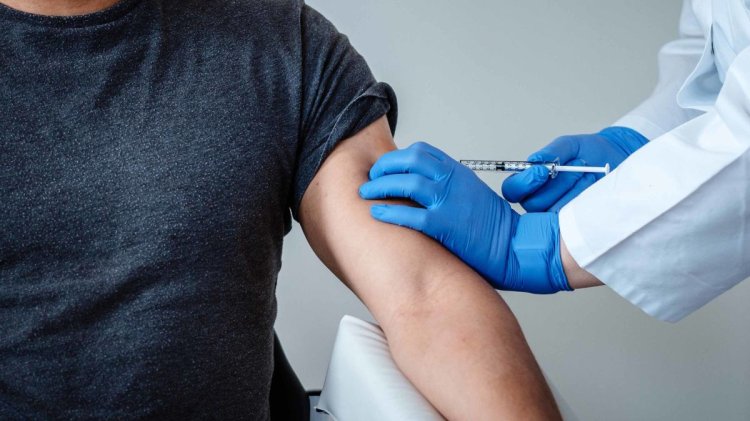Why Should You Be Scared Of Bubonic Plague? Black Death History, Symptoms & Treatment
Hanima Anand |Jul 07, 2020
When the coronavirus pandemic isn’t over, China recorded cases of bubonic plague which caused the Black Death, most fatal pandemic in human history. Here’s what you must remember.
- What Is Birther Conspiracy? Why Donald Trump Using It Against Kamala Harris?
- List Of Gorgeous Anurag Kashyap Wife And Girlfriends & His Family Facts
- From Genius To Renowned Astronaut, These Are Loneliest Persons In The Human History!
The coronavirus pandemic is hitting us hard with millions of deaths worldwide and following crisis. As if 2020 isn’t dramatic enough, China releases information on a suspected case of bubonic plague in Inner Mongolia.
If you have no idea why people are raising alarms about this infection, please read through some facts of bubonic plague Black Death pandemic during the 14th century. Starbiz.com also provides further details on bubonic plague symptoms, treatment, and prevention tips for your reference.

Bubonic plague Black Death – the deadliest pandemic of human history
To European and Asian countries, the word Black Death can make people feel goosebumps, due to the number of deaths it has caused to these regions during the mid-14th century. There is no official record of how many lives were lost in the pandemic but modern scientists estimate it ranges from 75 million and 200 million worldwide.
30% to 60% of the European population were killed in Black Death pandemic. The world witnessed a roughly 30% reduction in the number of people within a few years.

Imagine if Black Death pandemic happened again, remaining its same mortality rate, over 2.3 billion humans would have to say goodbye to the world (considering the global 7.8 billion population in March, 2020). That is not to mention half a million deaths by coronavirus till date.
More seriously, the bubonic plague outbreak didn’t end with the Black Death pandemic in the Late Middle Ages. It recurred at several locations on a global scale till the early 1900s.
From 2010 to 2015, over 3,200 people were confirmed infected with bubonic plague, in which 584 deaths have been recorded.
And now we are seeing it back, one more time in China.
What is the bubonic plague?
Knowing its origin can greatly help you to avoid it. Bubonic plague is a deadly bacterial infection, currently the deadliest, to human beings. It is caused by certain types of bacteria living in some animals.
Most common animals carrying these plague bacteria are rodents and their fleas. Bubonic plague is just one among 3 forms of the plague which causes painful and swollen lymph nodes on human body parts.

How bubonic plague spread?
Bubonic plague bacteria are mostly transmitted by the bite of infected flea or rodent. When carrying bubonic plague bacteria, many rodents will die, forcing their fleas to seek other sources of blood. People or animals that stay nearby can be bitten by these fleas and get infected with bubonic plague.
Another case of bubonic plague transmission is when people get in contact with the infected animal’s blood. Bacteria inside its blood may enter the human body through a cut in our skin.
What are bubonic plague symptoms?
After 1 to 7 days after contact with the plague source or getting infected with bubonic plague, people will get ill, headache, muscle aches and tiredness. They will also see tender enlarged lymph nodes on some body parts (usually in the armpits or groin).

Bubonic plague symptoms can also include flu-like symptoms such as difficulty breathing, cough, and chest pain as the plague may affect the patient’s lungs.
Moreover, the bubonic plague bacteria can invade the human blood flow, causing sepsis, tissue damage, or organ failure. The most serious consequence is death, which was common during the Black Death pandemic.
If left untreated, the fatality rate of bubonic plague is 30% to 100%. Modern antibiotics have reduced it to 8-11%, with the condition of early diagnosis.
Is bubonic plague treatment or vaccine available?
Unfortunately, the bubonic plague vaccine is not available. In fact, bubonic plague vaccines are still in development but not expected to be available commercially in the immediate future.

Having said that, modern scientists have introduced antibiotics that can prevent the development of bubonic plague if you get in contact with the plague infection source. Modern medicine also help to avoid complications or death from bubonic plague if it’s used timely.
How to prevent bubonic plague infection?
To prevent bubonic plague, you need to avoid getting contact with the infection source, mostly rodents, and their fleas. Below are some recommended methods for bubonic plague prevention.

- Make sure mice, rats, squirrels or types of rodents to enter your house by filling holes or gaps
- Keep your home and yard clean to get rid of possible shelters for these animals
- Cover yourself carefully when going out, especially to places where rodents are witnessed
- Avoid touching wild animals, either alive or dead. If you have to, remember to wear gloves.
- Use flea control sprays on your pets
- Don’t let outdoor pets like cats or dogs to sleep on your bed.
Above is everything essential about bubonic plague you might need to know for self-protection. Please help to share the information so others around you are fully aware of this deadly disease.
Do come back Starbiz.com for more Trending Worldwide reports.
- Tag






Comments
Sort by Newest | Popular